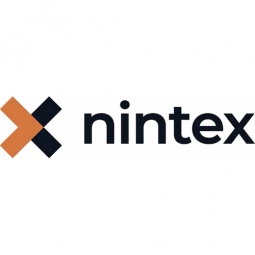技术
- 分析与建模 - 机器人过程自动化 (RPA)
- 功能应用 - 计算机化维护管理系统 (CMMS)
适用行业
- 金融与保险
适用功能
- 维护
用例
- 时间敏感网络
关于客户
Standard Bank & Trust Co. 是一家资产 22 亿美元的银行,在伊利诺伊州和印第安纳州西北部拥有 37 家分行。这家总部位于芝加哥的组织成立于 1947 年,致力于通过志愿者工作、与学校合作、本地招聘等方式帮助建设其所在社区。 2013 年,标准银行信托公司因在支持其所在地区个人的教育、文化、健康和福利需求方面“超越”而被授予伊利诺伊州银行家协会社区服务奖。随着银行及其客户群的增长,它发现自己面临着一些需要大量人力来克服的运营挑战。
挑战
Standard Bank & Trust Co. 是一家价值 22 亿美元的银行,在伊利诺伊州和印第安纳州西北部拥有 37 家分行,面临着多项运营挑战。该银行需要一种有效的方法来识别每个客户的各种个人和企业账户组合、查看总账户关系并了解特定客户的盈利能力。然而,事实证明,将帐户相互关联并执行数千个必要更改的过程是一项手动、耗时且资源密集型的任务。此外,该银行还面临着在工作变动时将账户重新分配给不同员工的挑战,每次事件可能涉及多达 5,000 个账户。另一个重大挑战是年度休眠借记卡清除流程,该流程要求银行手动搜索九个月或更长时间未使用的卡,并将其状态更改为“已关闭”。此过程每年涉及多达 10,000 张卡片,可能需要 150 多个员工工时才能完成。
解决方案
为了克服这些挑战,Standard Bank & Trust Co. 选择 Nintex Foxtrot RPA 软件来自动化这些流程。 Nintex Foxtrot RPA 添加了客户组合内和客户组合之间每个账户通用的弹性字段和家庭号码,帮助银行关联属于个人客户的多个账户和投资组合并了解其真实盈利能力。该软件在短短几周内执行了必要的 118,000 项更改,使银行员工能够腾出时间来处理日常工作。 Nintex Foxtrot RPA 还自动处理银行的责任代码维护,以每分钟约 8 个的速度更新代码。该银行的年度借记卡维护流程也实现了自动化,将其从长达 150 多个小时的手动流程减少到大约 5 小时的自动流程。 Nintex Foxtrot RPA 可以从其他休眠卡中识别出一张卡,在标准银行的系统中找到它,并在大约两秒内将该卡的状态更改为关闭,无需任何人为干预。
运营影响
数量效益

Case Study missing?
Start adding your own!
Register with your work email and create a new case study profile for your business.
相关案例.

Case Study
Real-time In-vehicle Monitoring
The telematic solution provides this vital premium-adjusting information. The solution also helps detect and deter vehicle or trailer theft – as soon as a theft occurs, monitoring personnel can alert the appropriate authorities, providing an exact location.“With more and more insurance companies and major fleet operators interested in monitoring driver behaviour on the grounds of road safety, efficient logistics and costs, the market for this type of device and associated e-business services is growing rapidly within Italy and the rest of Europe,” says Franco.“The insurance companies are especially interested in the pay-per-use and pay-as-you-drive applications while other organisations employ the technology for road user charging.”“One million vehicles in Italy currently carry such devices and forecasts indicate that the European market will increase tenfold by 2014.However, for our technology to work effectively, we needed a highly reliable wireless data network to carry the information between the vehicles and monitoring stations.”

Case Study
Safety First with Folksam
The competitiveness of the car insurance market is driving UBI growth as a means for insurance companies to differentiate their customer propositions as well as improving operational efficiency. An insurance model - usage-based insurance ("UBI") - offers possibilities for insurers to do more efficient market segmentation and accurate risk assessment and pricing. Insurers require an IoT solution for the purpose of data collection and performance analysis

Case Study
Smooth Transition to Energy Savings
The building was equipped with four end-of-life Trane water cooled chillers, located in the basement. Johnson Controls installed four York water cooled centrifugal chillers with unit mounted variable speed drives and a total installed cooling capacity of 6,8 MW. Each chiller has a capacity of 1,6 MW (variable to 1.9MW depending upon condenser water temperatures). Johnson Controls needed to design the equipment in such way that it would fit the dimensional constraints of the existing plant area and plant access route but also the specific performance requirements of the client. Morgan Stanley required the chiller plant to match the building load profile, turn down to match the low load requirement when needed and provide an improvement in the Energy Efficiency Ratio across the entire operating range. Other requirements were a reduction in the chiller noise level to improve the working environment in the plant room and a wide operating envelope coupled with intelligent controls to allow possible variation in both flow rate and temperature. The latter was needed to leverage increased capacity from a reduced number of machines during the different installation phases and allow future enhancement to a variable primary flow system.

Case Study
Automated Pallet Labeling Solution for SPR Packaging
SPR Packaging, an American supplier of packaging solutions, was in search of an automated pallet labeling solution that could meet their immediate and future needs. They aimed to equip their lines with automatic printer applicators, but also required a solution that could interface with their accounting software. The challenge was to find a system that could read a 2D code on pallets at the stretch wrapper, track the pallet, and flag any pallets with unread barcodes for inspection. The pallets could be single or double stacked, and the system needed to be able to differentiate between the two. SPR Packaging sought a system integrator with extensive experience in advanced printing and tracking solutions to provide a complete traceability system.

Case Study
Transforming insurance pricing while improving driver safety
The Internet of Things (IoT) is revolutionizing the car insurance industry on a scale not seen since the introduction of the car itself. For decades, premiums have been calculated using proxy-based risk assessment models and historical data. Today, a growing number of innovative companies such as Quebec-based Industrielle Alliance are moving to usage-based insurance (UBI) models, driven by the advancement of telematics technologies and smart tracking devices.
Case Study
Enhancing Security and Compliance in Remitly's Global Money Transfer Service with Fastly
Remitly, an online remittance service, was faced with the challenge of securing its proprietary global transfer network. The company needed a security solution that could meet PCI requirements and protect customers' sensitive transactions through its mobile application. The solution had to be capable of defending against new and emerging attack types without impacting performance. Remitly also had to deal with irregular traffic patterns, such as a sudden spike in account transfers from a small network segment on the Pacific coastline of South America. The company needed to determine in real time whether such traffic indicated an attack or valid requests. A traditional web application firewall (WAF) would not be able to distinguish this traffic, potentially leading to customer frustration if the IP was blacklisted.







